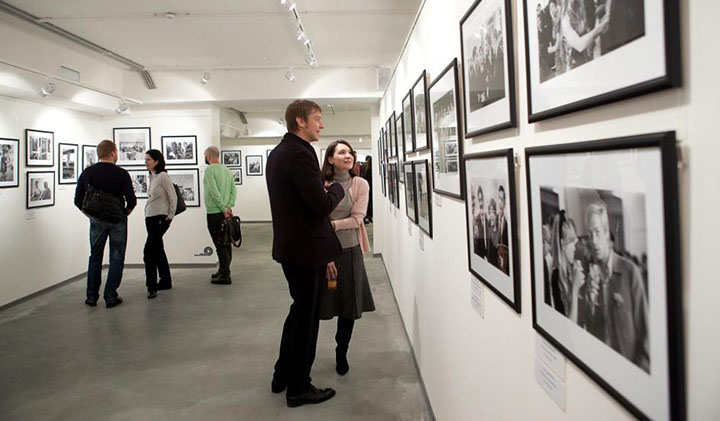Hello. My Name is Bob Locher, and I Am a Pixel-Peeper
![]()
From Wiktionary: Noun pixel peeper (plural pixel peepers) (idiomatic, photography) “A person who carefully scrutinizes a magnified digital photograph in order to evaluate resolution and image quality.”
a. A photography noob who erroneously believes that the quality of a digital camera is determined solely by the number of megapixels.
b. Insecure troll who frequents digital camera forums to religiously proclaim how his/her camera pixel count is greater than yours.
c. Wanna be photographer who debates about pixel count all day but doesn’t have the talent to take a half-decent photograph.
These are definitions culled from the Internet. Not terribly complimentary, right? There are even YouTube videos where pixel-peepers are sworn at with expert profanity. So why would I admit to being one? Even when I must acknowledge there is a lot of truth in the definitions? In my own defense, and for the record, I am hardest on my own photographs. I make a fetish of sharpness and resolution.
Hello. My name is Bob Locher and I am a Pixel-Peeper.
Most serious photographers, well aware of the above definitions, would say they are not pixel-peepers. They are lying to themselves. To a certain extent, we are ALL pixel-peepers. And we should be!
Here is a test to prove my point. Go to an exhibition of photographs. While there is plenty of argument about the correct and appropriate viewing distance for a given size of print, I challenge any photographer to deny that he or she does not go up as close as their eyes will focus to check the sharpness. That, friends, essentially is pixel-peeping. Then, we all back off and try to view the photograph in its entirety, as indeed we should. But you checked, didn’t you? Uh huh.

Any time we look at a photograph, whether a print or an electronic image, we evaluate sharpness, at least subconsciously. Usually, at least some portion of the photo should be sharp. Of course, some pictures are soft focus at all points, or possibly screened, and occasionally this may be justified and accepted for artistic purposes. But unless there is a legitimate artistic reason for the soft focus, we demand sharpness at an appropriate focus point — as much sharpness as the media is capable of displaying, at least at the focal point.
Sharp images have been the primary goal of designers and inventors since the dawn of photography. Virtually every innovation has been intended to further that goal. Better lenses, better recording media, artificial lighting, even, historically, flash powder. Increasing ISO allows photographs to be taken at faster shutter speeds for better sharpness. Also, they allow lens apertures to be set for optimum performance. One of the major benefits of modern imaging technology is that the photographer can usually shoot using aperture priority, instead of taking the lens cap off and counting to ten.
If you are contemplating the purchase of a lens, and choosing among several candidates, all else being even roughly equal, you will almost always select the sharper lens if there is a discernible difference.
This is not to say that we should all get a second mortgage on the house and buy a 100-megapixel medium format camera, and then spend a pile buying the finest German glass. More pixels, all else being equal, are always better, but generally the photographer is better served by the combination of a quality lens balanced to a reasonable camera.
There is considerable evidence that 8 megapixels and a good lens properly used is capable of delivering superb results. In this day and age, one would be hard pressed to find a new and current digital interchangeable lens camera with that low a pixel count. We have the equipment we need.
There are many variables that reduce the quality of a photograph beyond the lens and the media resolution. For example, camera motion, focusing failure, or haze. And then there are filters. I suspect the term “filter” is derived from the earlier “philter”. Note that Webster’s first definition of a “philter” is: “a potion credited with magical power”. Yup, that sounds about right as the marketing description for some of the camera filters offered.
And then there are the Pollyanna Post Production programs… But I won’t go there. Anyhow, let me pull this all together. Any photographer not doing intentional soft focus art should certainly be a pixel-peeper. If we are trying for a serious photograph, there is no excuse for not doing our best to achieve sharpness and resolution at the focus point of the picture.
Are you a pixel-peeper?
About the author: Bob Locher certainly makes no claim to being a great photographer; rather, he considers himself to not be a very good one. He is not much of a speaker either, and does not have his own YouTube Channel, nor does he do Photographic Tours. But, he has been in the photographic hardware industry most of his life, fancies himself as something of a writer, has opinions and is not afraid to express them. He loves photography, values technical quality and is indeed a pixel-peeper. The opinions expressed in this article are solely those of the author. Locher has written over 50 magazine articles as well as two books. You can find more of his work and writing on his website.